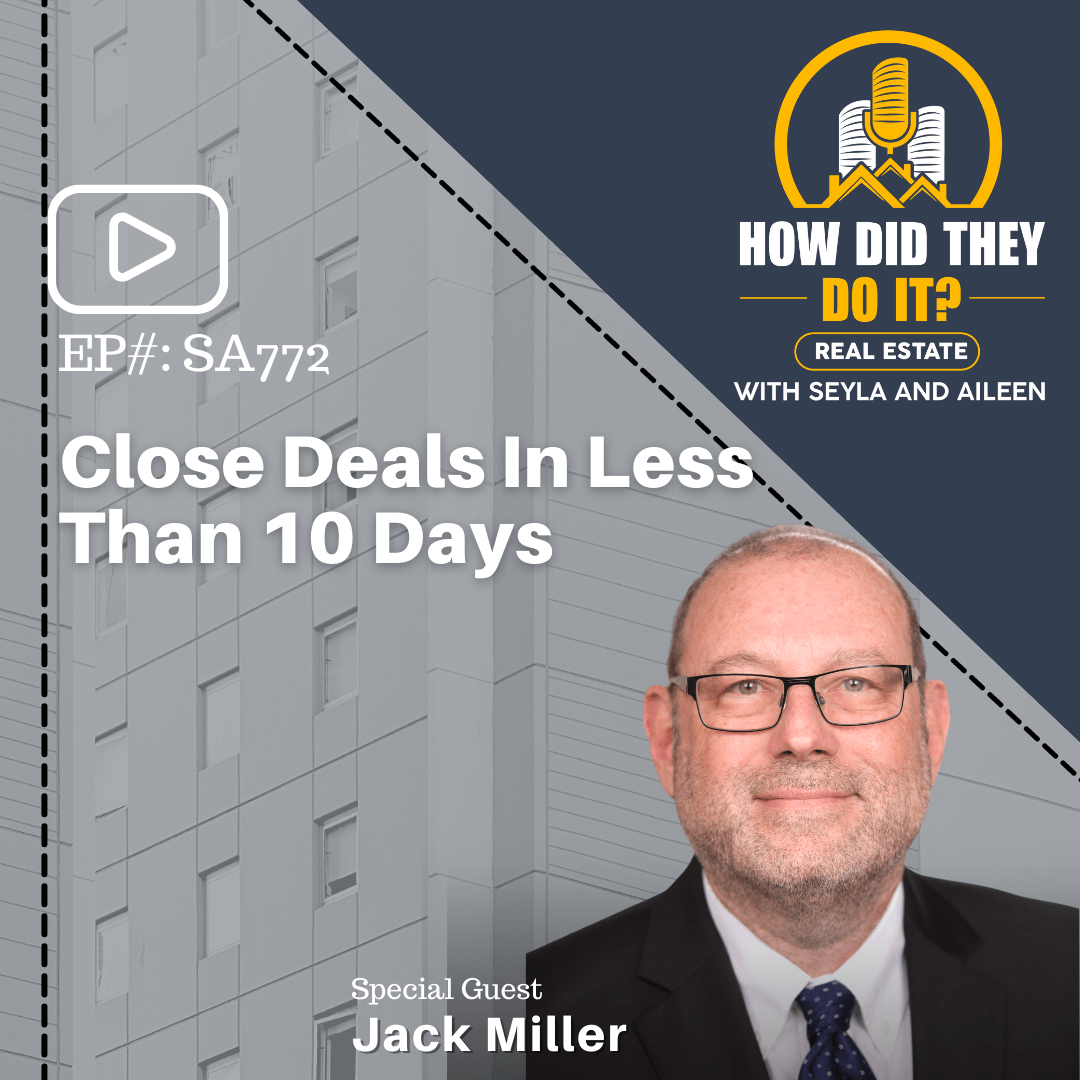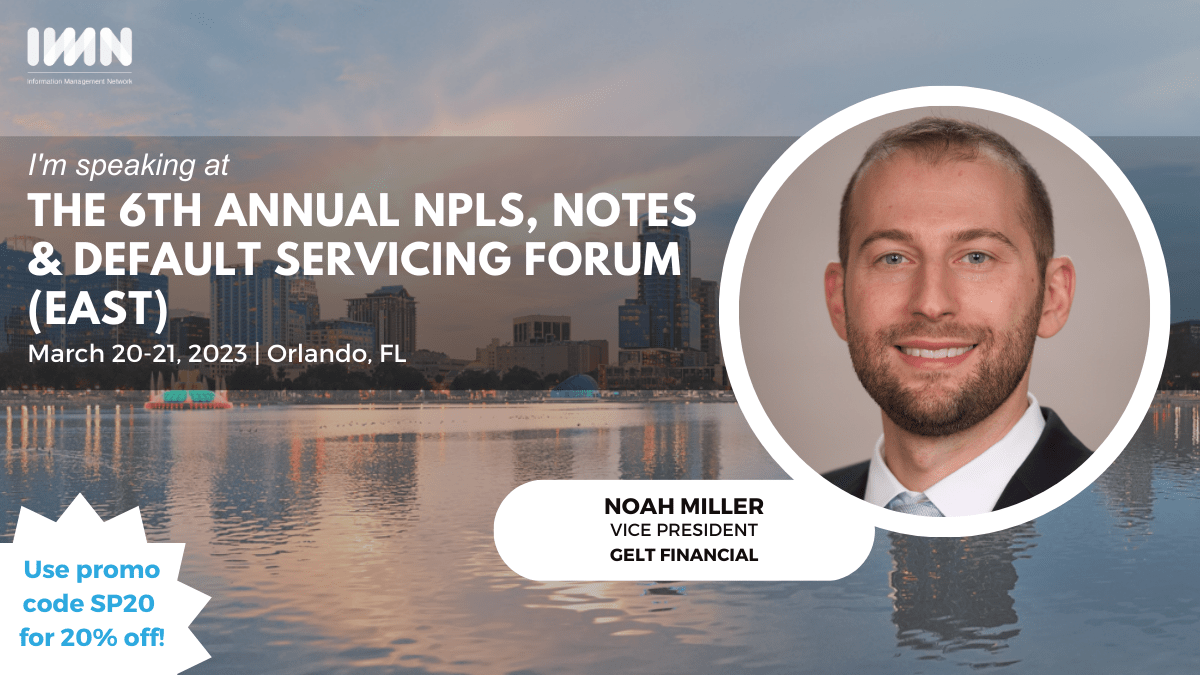What is a LTV Loan to Value and how do we calculate it? This is not a cut and dry question.
“Marcy: Hey Jack
Jack: Hey Marcy, let’s talk today about what is an LTV or a loan to value. So, I want to, can I back up? I want to talk two things: one from a technical perspective, you’re an… until, I’m sorry, you’re an underwriter, right? Yeah, it’s weird looking at the camera and I’m talking to you. You’re an underwriter. I can’t help it, you’re an underwriter. How do you mathematically compute an LTV? Then, let’s talk a little bit about value— the mathematical formula, how do you establish a value, and then how we sometimes use a value and not a purchase. Let’s first talk about loan to value. How do you do an LTV? What’s the mathematical formula?
Marcy: Well, I mean, we, for rule of thumb, Gelt Financial sticks with 65% loan to value lenders. Okay, so we will take 65% of the purchase price or 65% of the value.
Jack: Can I back up?
Marcy: Yeah.
Jack: Okay, I want to make so what do you… I really should have Googled this first. So much amount, but what is a loan, an LTV, or a loan to value?
Marcy: What versus what the value is, and we take a percentage. We want a certain amount of equity in the deal, a certain amount of equity in the property, where we feel comfortable with our leverage, how we lend.
Jack: So, an LTV, let me say it my idiot way, LTV is a mathematical computation.
Marcy: Right.
Jack: That a lender is comfortable lending a percent of the value. So, if a property is valued at a hundred thousand—picking a number, simple number—and a lender would do like I think certain conventional lenders on owner-occupy, we don’t do owner-occupy, we do 90%. So, a 90% leverage or loan to value would, on a hundred thousand, would be ninety thousand. So, it’s the amount a lender will lend you on the value. So, I think with that, there’s two variables, it’s—it’s the LTV, which is a percent divided by the value of the property. So, the two variables, let’s break it down, is in the example I use, it’s 90%, so we—this is sort of where you started. Gelt usually lends 65%. We want to—I’m being honest—we want to be safe. We don’t want to have a problem; we don’t want to lose money.
Marcy: So, that’s just because that’s our opinion of how we are safe.
Jack: Yes, well I want to get to the value I’m at. So, the first part is the—the mathematical form, the percentage we use. So, as a rule, we use 65%, but let’s talk about when we make exceptions to those rules. You just sent me a deal this morning we didn’t do, but it was a 70% because the property happened to be in Florida and this and that, so sometimes we’ll go higher than 65 percent.
Marcy: Depending on the type of property and where it’s located.
Jack: Yeah, we did. I forget the name, but a legacy, it was a very sad story. She hurried a bunch of money—you’ll remember the deal—and she bought, like, four duplexes in Orlando, and we did an eighty percent because we were comfortable. It was Orlando, they were rented out, and whatever. So, the first thing is we generally do 65, sometimes 70 percent, all depends on…
Marcy: The deal by deal.
Jack: Deal by deal, yeah.
Marcy: I don’t want people out there hearing us saying, “Oh, I heard this, I heard not.” It’s basically 65 percent deal by deal, we might go a little higher.
Jack: That’s correct, or conversely, we can go lower.
Marcy: Yeah, it depends.
Jack: It depends, but what really matters to the borrower is the number, not the percent, the number, what that is.
Marcy: Because it has to work for them, yeah. That’s the whole point, is to make the deal work.
Jack: Yeah, so one of them, the 65% or 70%, or 50%, is—I remember in math, what’s the numerator and denominator? You remember that in school? Oh my God, I hated school, yeah.
Marcy: We don’t even like, we just use a calculator.
Jack: What’s a numerator and a denominator? I should know that.
Marcy: Numerator’s down, numerators on top, so you divide it down.
Jack: So, with the numerator be the 65 or the 100? The numerator would be…
Marcy: The value divided by our level.
Jack: So, the denominator is the 64, yeah. So, the… our denominator, I still get confused. I do terribly.
Marcy: We don’t want to confuse you. Bottom line is basically 65 loan to value lenders.
Jack: That’s great, yes.
Marcy: Case by case, yeah.
Jack: Now the more interesting thing is the value.
Marcy: Right, how do we figure out what something’s worth?
Jack: So, I think the industry as a whole does the value, the purchase price or a lower of their appraised value. So, a couple things, we don’t do appraisals in 99.9. I don’t think we’ve done appraisals in the past three years.
Marcy: We do our evaluations internally, but how do we do our own evaluations? Let’s talk about that.
Jack: Yeah, let’s talk about that. Marcy, you talk about that.
Marcy: So, we will look at the property and see how much income it produces. We’ll want a rent roll with the expenses on the property to figure out what the NOI, which is the net operating income for the property, and then we’ll see—you know, how much it’s worth in the area. We’ll look at a cap rate, what a cap rate is, is what the going percentage of value in that area—you know, better cities have lower cap rates. But in today’s market, it’s very distorted. Right now, what are the cap rates, what are the values, because the rates have gone up so much, the properties have not caught up with the rates yet. I will tell you that we have seen a lot of purchases where the buyer, the borrower is overpaying for the property because when we analyze it and we look at it, they’re still—the sellers are still wanting top dollar, but the market’s not calling for that anymore. So, we’ve had to adjust our numbers to figure out really what things are worth so we can figure out what we’re willing to lend on it.
Jack: So, when you see a property—okay, so first of all, let me back up, because people are going to be watching this who want to know what a value is for an owner-occupied home, so we do it different because we are commercial and investment professional.
Marcy: Right, we are commercial investors. We do not do owner-occupied houses.
Jack: So, a house may be worth more to live in. So, ultimately, how a value, value is really what a ready, willing, and able borrower or buyer will pay for a property. It’s common that appraisal appraisers do establish values. We don’t do appraisals, so we back into it using…
Marcy: Right, but the reason we don’t do appraisals, Jack, is because, you know, again, an appraisal is someone’s opinion, and honestly, we value our opinion more than we do in appraisers because we’ve been doing this a really long time and we can see what the Market’s doing and see what the type of income the property is bringing in.
Jack: You could see the gray. I’ll show you how long we’ve been doing it.
Marcy: He’s so old.
Jack: I know, I know. It’s either gray or no air.
Marcy: So, we figure it out, you know, the best to our ability. You know, we’re definitely—I would say, you know, sometimes we come in more conservative because we want to protect our loan.
Jack: So, a couple of things. One, a value is not an exact science. It’s an opinion, and person A may give it—I think it’s worth more than person B, and it may be worth more to person A than person B. Give an example of an owner-occupied home. If your sister lives next door to you, it’s worth more to you because you want to pay for it because you want to live next to your sister. Or if your in-laws live next door, maybe it’s worth less because you don’t want to live next to them.
Marcy: You want to live in a certain area, or you want to have certain stores or certain area, so you’re willing to pay more.
Jack: It’s an opinion, right? And also, you know, we’re making this at a time of increasing interest rates. We’re making this mid-February ’23 of increasing interest rates. So, when rates go up, values go down. So, values never really stay the same; they’re always a moving target.
Marcy: But we have noticed in the market, though, that it hasn’t caught up yet. I think the next year, it’s going to really catch up where sellers are going to have to realize that their property is not worth as much as it was years ago.
Jack: So, when we figure—let’s say we look at a multi-tenant property, let’s say it’s a retail center.
Marcy: Okay.
Jack: We—you and I just looked at a retail center in a suburb of Cleveland. Was it? It’s closing this Friday. Literally, we just looked at it. It’s a little city outside Ohio.
Marcy: A little strip, a little shopping center.
Jack: Four units, two already two are vacant, and the guy got us. I don’t want to go into details because yeah, so on a property like that, how would we come up? What’s the matter? Like, how would we come up with value? What do we do when we see a property like this?
Marcy: Well, in this particular situation, there’s four units, and we know that only two are leased out and two are vacant. So, the property is not stabilized. So, right now, as of today, the value is A, but the value is going to become B in the future because the other two units are going to be leased out. The property will be a hundred percent stabilized, and then the property is going to be worth more money. So, we look at two things. We look at what its value now, and we look at the projection of what it’s going to be valued in the future. And depending on the borrower’s needs, we’ll adjust the loan amount. If we feel comfortable, we may do more than 65 percent on that type of deal. If it demands it or will stick it 65 percent because you know that they’re paying higher rates with us because where our rates are not Bank rates, but we do know that the borrower will be successful because he’s going to stabilize the property, and he’s going to refinance us out into a traditional commercial loan which the rate will be better, and then there you go. There’s his NOI, and there’s his successful story.
Jack: So, on stabilized properties, what we do is we take the gross income, we minus the expenses, NOI, net operating income, good. Thank you. And then we use a cap rate, so to a certain degree, we can plug in any of those numbers. So, if you bring us literally any type of property throughout anywhere in the US without a rent roll, without any financial information…
Marcy: We can figure out the value.
Jack: Yes, because we have enough experience. We look at so many deals, hundreds and hundreds of deals, probably five, six hundred deals a month. So, what happens is we can—we can plug in a number and say, “Okay, we think that market is 15.” I’m just going to use a retail center, fifteen dollars a foot, and we think the expense load is roughly 40 percent. So…
Marcy: And we’re conservative, yeah. You know, we’re going to go with the lower number.
Jack: But we’ll come up with a value. And advice to real estate investors is you need to learn your—I always talk about learn your craft and don’t be…
Marcy: No, because you need to learn to look at it from all different angles, Jack. That’s why we tell the brokers, the borrowers…
Jack: Sometimes sellers don’t present all the factual information.
Marcy: So, you’ve got to do your own research.
Jack: Marsha said it more apropos. I said all the factual information. She said the truth. So, you need to be able to, if you’re a buyer or an investor, you may need to be able to look through things.
Marcy: And when we say look through things, it’s really kind of simple. We get all our information from the internet. As anyone can see what the going—you know, rent rates are, see what’s selling per square footage, do your own research. Do not just take the explanation of your realtor or broker.
Jack: Quite often, don’t—
Marcy: They don’t give you the real picture.
Jack: It happens all the time, you know. I don’t say every day of the week. I’m exaggerating, but constantly we close a deal. We warn buyers and, you know, be careful because you didn’t get all the information. We think the expenses are more, we think the income’s lower. And inevitably, they call us up a month or two later, “Oh, you were right. I should have listened to you.”
Marcy: But we help them. We figure it out and…
Jack: But either way, so you want to come up with the gross income, you want to come up with a realistic expenses, but you have to be careful with expenses. For example, certain geographic locations, they reassess taxes based on a sale, so you
Jack: But either way, so you want to come up with the gross income. You want to come up with a realistic expenses, but you have to be careful with expenses. For example, certain geographic locations, they reassess taxes based on a sale. So, you have to plug those in. If a seller is giving you expenses that don’t have the appropriate tenant improvement leasing commissions, you know, capex, you have to come up with what you think is the real expenses. You’ll come up with a net. You’ll put an appropriate cap rate on there, and you’ll come up with a value. And again, it’s all an estimate; there’s no exact science, but it’s not necessary…
Marcy: But, as I always say, I’m going to say again, it’s an opinion.
Jack: It’s an opinion. Now, what do we do on let’s say we’ve done—let’s say it’s 10 stores, and five the deal we did today, two of it occupied, two are vacant.
Marcy: We’re going to take a performer. We’re going to ask…
Jack: Tell them what a performer—maybe some people don’t know what a performer is.
Marcy: A performer is what’s going to…
Jack: I think it’s so dryable…
Marcy: A performer is, in a sense, a rent roll but what’s going to be in the future, what it’s going to perform in the future. So, take that into consideration. Like in this situation, it was four units. We know two are vacant. Well, what could those two units potentially rent for? So, we’ll plug those numbers in with the expenses and then go from there.
Jack: Can I ask a question?
Marcy: Yes.
Jack: Yeah, that’s a new thing in the office. Michael raises his hands in meetings, very polite.
Marcy: I’ll burst in. Go ahead.
Jack: He’s a very polite guy.
Marcy: I’m not, not polite, but I have, I just I want to talk.
Jack: So, a couple things. So, you can, like, the two units that we looked at this morning, they were maybe a thousand fifteen hundred square feet. So, you, when you come up with—well, you look at your comps, you see how much they’re going to rent for. So, let’s say the rent’s ten dollars plus cams or 15 gross or whatever the rent is. You’ll see. But you also have to guess, and it’s a guess, how long they’re going to be vacant for, so giving…
Marcy: Actually, you’re going to rent them out. If you’re going to be, like, you know, build-outs or…
Jack: Improvements.
Marcy: And improvements, you know, there’s—it’s not as simple as sometimes borrowers think.
Jack: Well, one of the reasons we do—we like to do deals in urban and suburban areas as opposed to rural is…
Marcy: Because you can have people that go through.
Jack: Intensely populated as well. We don’t do specialized properties. We don’t know how to rent them. So, we at Gelt like properties, whether it be an apartment or a flex building or a self-storage mixed-use that is easy to rent out that you can call up a local realtor and within 30, 60, 90 days, it’s rented out. And the truth is, if you’re looking at, like, a five-unit building in a densely populated area, we do a ton in, like, Brooklyn, New York. Times Square, you’re going to get it right. You know, whether it’s renting out to Sally or Mike, Tom, Dick, and Harry, if the tenant name doesn’t matter because if it becomes vacant, you’ll rent it to somebody else. So, you have to build in your projections. I did it, and I don’t know if you were part of it, but I remember I did one on how to build projections and debt service yields and a spreadsheet, how to put it together. It’s really a good one to watch because when you do…
Marcy: I definitely do not do that because it’s too technical for me.
Jack: I—I had one day like six years ago. Yeah, it’s not my thing. Okay, no, actually, I like spreadsheets. I really love it because I like projections. It’s kind of interesting. But what you do is you sort of handicap and say, okay, I’ll be able to get this much rent. How sure am I of it? How much am I going to have to spend in tenant fit-out and leasing commissions, things of that nature? And how long it’ll be vacant for, right? And then…
Marcy: You’ll see what your numbers look like.
Jack: Yeah. So, on performance on properties that aren’t stabilized, value-added, we take a performer again, and I have to warn borrowers. And again, I—I feel bad always doing it. You know, I don’t want it to come off where I’m lecturing or preachy or a little bunch…
Marcy: And also, like, not to, in a sense, not to trust people. Yeah, ’cause most people, you know, they’re gonna tell you the whole story, but then there’s that pocket…
Jack: They will tell you what they want you to hear.
Marcy: Of course. I mean, that’s with anything.
Jack: Yeah, they don’t…
Marcy: Know, like, when you first start dating someone, everyone’s, like, on their best behavior because they want…
Jack: I told Marcy I was a nice guy and with a good sense of humor, I’m patient…
Marcy: As I’m here six years later, oh my god.
Jack: Oh, I lied to you, basically.
Marcy: Well, I guess you grew on me.
Jack: Yeah, whatever.
Marcy: Anyway, you know, so you just have to kind of play it out.
Jack: Yeah, but be cautious with what they tell you, whether it be a realtor, nothing against realtors, or nothing against sellers. But they tell you what they want you to believe.
Marcy: So, do your own research.
Jack: And don’t believe anything they tell you. You know, I, you speak.
Marcy: I mean, that’s not in a bad way. That’s in a way like be an investigator. You need to investigate and look for the facts.
Jack: Because no, at the end of the day when the poo-poo hits the fan, they’re going to be gone. The realtor is making a commission on you. The seller wants his money, you know? The seller’s always gonna say, “Oh, it’s always vacant. There’s no management, there’s no tenant improvement, there’s no leasing commissions, there’s no this, there’s no that.” They’re full of it. There’s always expect much, much more expenses. So, in your performer, build in a lot more expenses because even if it’s 100% occupied now, I guarantee the day you buy it, there’s going to be a problem.
Marcy: Year breaks, you need to redo something. You need to shovel snow, you need to do this. You know, that it’s like leak.
Jack: There’s a leak.
Marcy: It could be plumbing issues. I mean, there’s just everything, right?
Jack: I can’t help it. I’m 60 years old. I have plumbing issues. What can I tell you? I’m almost 61, actually. Anyway, where the heck—where are we? So, at the end of the day, you want to come up with a number that’s the projected or stabilized NOI. You have to put a realistic cap on it and just do the math, and it’ll come up with a value.
Marcy: And that’s the value.
Jack: Yep. So sometimes, so at the end of the day, you’re going to come up with value. So, we have two things. We have usually our 65, which is a general rule.
Marcy: It’s pretty much a good rule, 90—yeah, 99% of the time. It’s just the way we look at it.
Jack: But what’s more subjective and what the value is, the property could be worth 800 grand, could be worth 900, a million, million one. And look, I’d love to tell you…
Marcy: Because then there, I will tell you also because of that issue, like we do have a lot of brokers or sellers, you know, come to us or borrowers thinking that their property’s worth this value. And then I come back to them and I’ll say, “Well, we don’t think it’s worth that value. We think it’s worth B value. And the property can only handle C loan amount.” So, you know, they come to me with a request, but then once I crack down the numbers and look at it from different angles, I will let you know what the property can carry in a loan amount. That’s another thing, you know? Even though, like, the property may be worth 600,000, and we’re telling you that we’ll do 65% percent, but then when I get that loan amount, the property cannot carry that loan amount. They can’t—they can’t make the payment because the rents haven’t caught up with the value, whatever the case may be. That happens a lot, actually, in Brooklyn, in New York. It happens a lot. The properties are worth more than what they’re getting in rent. So, that’s another thing that we will sometimes do. The 65%, we’ll do whatever the property can carry in a loan payment.
Jack: Yeah, so look, I’d like to tell people that we get it exactly right 100% of the time. Well…
Marcy: We do our best.
Jack: We do our best, yeah. And that’s all anyone can do, you know? We try to come up with a value. We divide it and come up with 65% of that, and that’s usually what we’ll lend. Sometimes there are exceptions to it, you know? We base our value on what we call the value, not the purchase price. So, give you an example. There’s something called ARV, after repair value, right? So, let’s say, I’m just going to—let’s just stick with Brooklyn only because we talk about it…
Marcy: But we do a lot in Brooklyn.
Jack: But we do loads all over the place. Yeah, okay. I’m going to go on from Brooklyn, only because there was a deal we did. I forget the lady’s name. She was so nice and so thankful. I think it was Birmingham. I forget. She bought a property. It was a single-family home. She bought it very cheaply. Let’s say 80 grand, and let’s say my numbers may be off. I forget. Let’s say she needed 50 to fix it up. So, she’s in for 130. But she thought it would be valued at 250 after it was completed. So, if she’s buying a property for 80, she’s putting 50 in, she thinks it’s going to be worth 250 or 230 after it’s completed. What the heck do you do? You lose into value on that? You do the ARV. So, let’s just use a number of 250 for round number. If we really believe that, okay, we will do our loan to value on that 250 number. In this particular case…
Marcy: There is. We gave her old other real estate.
Jack: Yes. So, if I remember correctly—and this goes on all the time—at closing, we’ll lend them the 80 grand for the purchase price.
Marcy: And then hold back money for the rehab and then disperse it as the work is done.
Jack: That’s correct. Let’s say it’s 50,000. Maybe at closing, we’ll give her 10,000 for the work. Once it’s done, you know, as the work’s done, we’ll advance it on a draw schedule. So, they—in those cases where it’s a value-add deal, use what’s called an after-repair value or an ARV, which sometimes gets a little confusing. Now, another thing, I don’t want to confuse everyone, we do a lot here or a good amount of blanket loans. So…
Marcy: Which we’ve had videos on. Just blanket loans to explain them. A blanket loan is when we take several properties and put a lien on all of them to get more equity for us.
Jack: So, if a person, give you an example, if a person’s buying a product for 250 grand, right? And it’s possible for us to lend them 250 grand if they own…
Marcy: Other property where the equity is coming from there to buy that purchase, and we’ve done deals like that.
Jack: A lot of them. A lot of them. A lot of our deals have other collaterals. So, a lot of times, a borrower will come in and, in their eyes, they’re getting 100% loan to value because we are lending them 100%…
Marcy: On the purchase.
Jack: On the purchase. In our eyes, we’re
Jack: On the purchase, in our eyes, we’re getting a 50% LTV deal because there’s other collateral. So, there’s a lot of—now, not on every deal. I know sometimes when we talk about 100% LTV, it’s very—we don’t do a hundred percent financing. Only if there’s a blanket and there’s equity in other properties.
Marcy: Or…
Jack: Or the property they’re buying is significantly undervalued.
Marcy: Right, depending on the situation. Like we did do a deal once where it was a lease option to purchase. So, they had been in a contract for a while, and now it had come to the point where it was time to purchase the property, and the purchase price that they had on the deal, the property had gone up so much in value that we lent them a hundred percent of the purchase price to two…
Jack: Yeah. So, we’re Gelt because we’re not selling our loans on the secondary market. Yeah, she makes the decisions. She lets me once in a while…
Marcy: We do it together.
Jack: Together, we’ll base our…
Marcy: Loan to value, really.
Jack: I was going to say, when a girl says to a guy, “I’m going to get in trouble.”
Marcy: Are we in joke mode right now?
Jack: No, it’s not a joke. Oh, oh, we do it together. We decide together. That’s not true. The moon always decides.
Marcy: Sometimes, I try to sway your decision, but you make a decision. Sometimes, there’s no swaying you.
Jack: Really?
Marcy: Yeah.
Jack: Easily swayed, no. Anyway, we base our value on what we perceive the real value is, not necessarily the purchase price. So, if you’re buying something at an auction—another deal, it was a repeat borrower—he bought a warehouse property. It was in the suburbs, right outside the airport in Chicago.
Marcy: He got a great deal on it.
Jack: A steal.
Marcy: And we gave him all the money.
Jack: A hundred percent.
Marcy: It’s worth so much more than he paid.
Jack: Yeah, and you sold it for us. So yeah, bottom line is, it’s not so easy. There’s a lot of variables when you figure loan-to-value.
Marcy: But the bottom line is, Jack and I have the experience to figure out how to make the deal work. That’s all I could tell you.
Jack: Okay, do we get the listener a good—
Marcy: I think so, yeah. I think they had all their questions answered. And of course, any questions you have, please just send us a little note, and we’ll answer that.
Jack: We answered. That’s correct. Yeah, we’re going to post this on YouTube. Oh, I was supposed to tell people in the beginning. I always forget, like, the YouTube channel.
Marcy: You know why we say in the beginning? Because they may not get through the ads.
Jack: Yeah, like the YouTube channel, like the video, leave us your comments and questions. We’ll answer them. And if you have any more ideas for videos, let us know.
Marcy: We love to talk, and we have so much information in our brains.
Jack: I don’t really like to talk.
Marcy: I do.
Jack: Yeah, if it was me, I would sit on the sofa and just never talk. I’m fine.
Marcy: You like to talk on this.
Jack: I don’t like to—
Marcy: ‘Cause you like to talk about what you do. You love it.
Jack: I love the business. I’m passionate about the business, and I do like to talk about it. But generally, I’m not a talker. I like to sit.
Marcy: Yeah, we’ve gone to lunch, and he doesn’t talk.
Jack: I don’t talk. I’m better off sitting on the sofa, watching Netflix, no interaction with humans.
Marcy: I get it.
Jack: Anyway—
Marcy: That’s it.
Jack: That’s it. Have a great day. Have a great day. Remember, when your bank says no, we say yes. Take care.
Marcy: Bye.”
Category: Education
Tag: loan to value,LTV
























